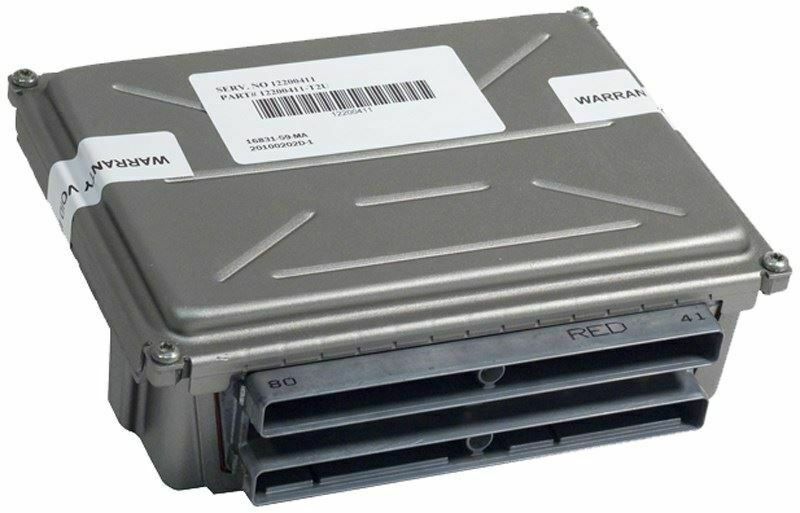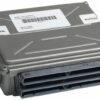Is Your GM Truck Running Rough? It Could Be The PCM.
If you’re dealing with frustrating issues like a persistent check engine light, erratic shifting, poor fuel mileage, or even a no-start condition in your GM truck or SUV, the root cause might be the very brain of your vehicle: the Powertrain Control Module (PCM). As the central computer, the PCM manages everything from fuel injection and ignition timing to transmission shift points. When it begins to fail, it can create a cascade of confusing symptoms that can lead to costly and incorrect repairs.
Diagnosing a Faulty Powertrain Control Module
A failing PCM doesn’t always die suddenly. It often exhibits intermittent problems that can be difficult to pin down. You might be replacing sensors, spark plugs, or coils, only to have the same issues return. This is a classic sign that the computer itself is the culprit. This module is the direct replacement for a wide range of vehicles, ensuring you get the right part to solve these complex electronic issues.
From the Diagnostic Bay
We once had a 2005 Silverado 2500 in the shop with what the owner swore was a failing transmission. It was shifting hard from 1st to 2nd and sometimes refused to shift at all. Our initial scan showed no specific transmission codes, but we did find a U0100 code, indicating ‘Lost Communication with ECM/PCM’. After verifying the wiring and grounds were solid, we identified the PCM as the faulty component. A new, programmed module fixed the ‘transmission’ problem instantly. The PCM controls the transmission’s electronic solenoids, so a fault there can easily mimic a major mechanical failure.
Your Direct-Fit Solution: A Pre-Programmed GM PCM 12589463
Don’t just replace the part; get a complete, ready-to-install solution. This GM PCM 12589463 is not just a component; it’s a service. We take your vehicle’s unique 17-digit Vehicle Identification Number (VIN) and flash the module with the latest, most stable software updates directly from GM. This critical step ensures that the PCM is perfectly matched to your vehicle’s specific configuration, including engine size, transmission type, and emissions equipment. This process eliminates the need for an expensive trip to the dealership for programming, saving you time and money.
Common Symptoms of a Failing PCM:
- ✔ Persistent Check Engine Light with various communication or sensor codes.
- ✔ Rough, unstable, or surging engine idle.
- ✔ A noticeable drop in fuel economy.
- ✔ Harsh, delayed, or incorrect transmission shifting.
- ✔ Intermittent engine stalling or complete no-start conditions.
- ✔ Failure of your scan tool to communicate with the module.
- ✔ Random misfire codes even after replacing ignition components.
Installation and Setup
Physical installation is straightforward for most DIY mechanics. Typically located under the battery tray on the driver’s side frame rail or next to the air filter box, the PCM is held in place by a few bolts. After disconnecting the vehicle’s battery, simply unplug the electrical connectors from your old module and transfer them to the new one. Once installed, you will need to perform a security relearn procedure (also known as a VATS relearn). This procedure syncs the new PCM with your vehicle’s anti-theft system and can usually be completed in about 30 minutes using only the ignition key. In some cases, a Crankshaft Variation Relearn (CASE Relearn) may be necessary to clear specific engine codes, which can be done by some high-end scan tools or a qualified technician.
Frequently Asked Questions
Do I need to have this PCM programmed by a dealer?
No. We handle all the programming for you before we ship the part. Simply provide us with your vehicle’s 17-digit VIN during or after checkout, and it will arrive with the latest GM software specific to your truck or SUV.
What information do you need from me?
We require your complete 17-digit Vehicle Identification Number (VIN). This is essential to load the correct software and ensure compatibility with your vehicle’s specific options.
Is this part truly plug-and-play?
It is pre-programmed, making it nearly plug-and-play. However, you will need to perform a standard security relearn procedure after installation. This process syncs the module to your vehicle’s anti-theft system and typically takes 30 minutes using just your ignition key.
What is a CASE relearn, and will I need to do one?
A CASE (Crankshaft Angle Sensor Error) relearn synchronizes the PCM with the crankshaft position sensor. After installing this PCM, you may have a check engine light with code P1336. This code will not affect drivability and can only be cleared by performing the CASE relearn with a compatible scan tool.
Where is the PCM located on my vehicle?
On most compatible GM trucks and SUVs from 2003-2007, the PCM is located in the engine bay, either on the driver’s side frame rail underneath the battery tray or mounted next to the air filter housing.
This part number is slightly different from mine, but my vehicle is listed. Will it work?
Yes. This module, part number 12589463, is the correct hardware service replacement for several original part numbers, including 89017750, 12582605, 12602802, and others. We program it to function identically to your original module.


